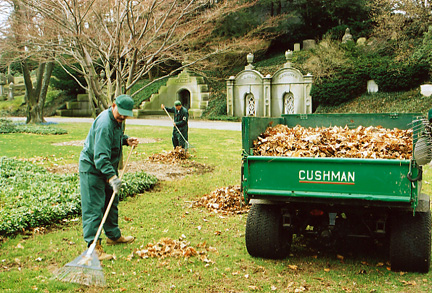In 1831 members of the Massachusetts Horticultural Society founded the cemetery with the belief that a natural setting was more beneficial than crowded churchyards for memorializing the dead and consoling the living. Mt. Auburn, as well as the earlier example of the Pere-Lachaise cemetery in Paris, sparked the rural, or garden, cemetery movement in the United States which eventually led to the establishment of public parks and the professionalization of landscape architecture.
Maintaining the 174 acres of this park-like cemetery requires a number of specialized horticultural teams, from the arborists and pruners who take care of the more than 300 species of trees and 130 species of shrubs and groundcovers to the mowers and trimmers who are in perpetual motion keeping the grass cut. As spring arrives so do the seasonal crews, often men who return every summer from Puerto Rico. But in the greenhouse, work goes on year-round with the same small group of dedicated horticulturists.


[Geraldo
Santiago (aka Tudi) continues to plant pansies in the Asa Gray Garden
as Paul Kwiatkowski (middle) stops to talk to Paul Walker, the Head Arborist,
about their report to the Pesticide Licensing Commisssion. Tudi and Paul
Kwiatkowski are horticulturists at the greenhouse. Holly, the black Lab,
was bought by the cemetery in order to chase away the geese.]
[Marcelino
Perez (front) and Felipe Santiago of the gardening crew rake leaves that stay
on trees through the winter and are pushed off in the early spring by growing
tree buds.]